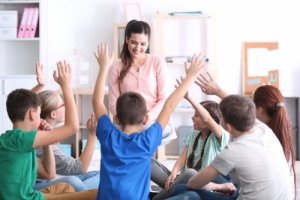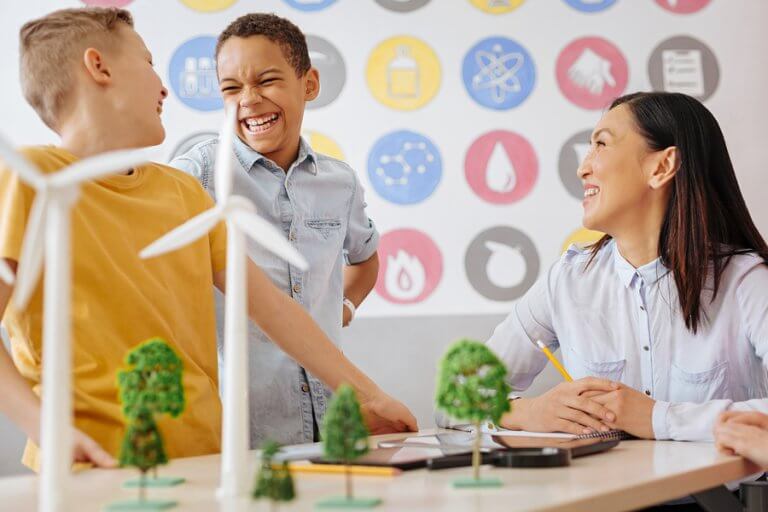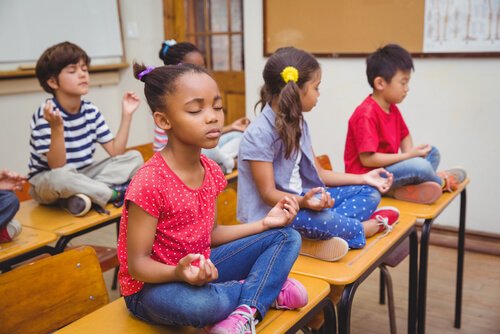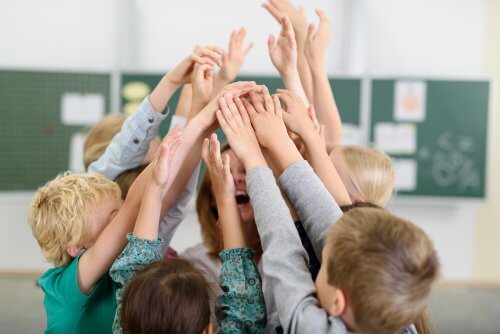How to Have a More Effective Classroom

An effective classroom is one of the most important things a teacher should accomplish, but it can be hard. This often happens to new teachers. Although, it can also be hard for veteran teachers because there’s always a student ready to challenge you.
Many strategies can help you to organize your students, know their learning tools, have a flexible teaching space, and effectively use your time, and theirs, in order to teach and learn.
Each class and student presents a different challenge in and of itself. Teachers need strategies that work best to have a more effective classroom. Let’s see some of these strategies to help you create a healthy environment for teaching and learning.

Create a positive connection with your students to have a more effective classroom
Don’t rely on luck if you want to have a more effective classroom. Experts agree that a healthy teacher-student relationship is the basis for an effective classroom. It makes sense. Everybody wants to feel cared for and appreciated by those who matter to us.
Establishing positive bonds helps kids feel like they belong to the group and encourages students to participate and cooperate in the classroom. This can also help them feel more confident to experiment and to succeed in a learning environment – one where they won’t feel limited by fear.
How can you develop a positive bond with your students?
Having a clear and simple structure can make your students react positively to a learning environment. As their teacher, you need to understand what’s expected of you and your class.
Your classroom’s rules and conditions need to be practical and reinforced coherently. If you do this, your students will trust you.
Likewise, treat your class with respect and create a pleasant learning environment. By doing this, you’ll reinforce their confidence, they’ll participate more and you’ll help them develop their social skills.

Set a routine for the classroom
The University of Louisiana conducted a study on what makes a teacher effective. Researchers found that the instructors who used their class’s routines as a way to achieve higher standards had a higher rate of success.
“To have a positive and orderly learning environment, you need to establish a routine for the daily activities and a homework system. Work your way from the most general aspects, then focus on specifics.”
For example, if there are students who are stuck on homework, have some simple guidelines they can use to help themselves with. One of these can be asking their classmates for help. If this doesn’t help, then they should ask you for help.
Have a flexible seating chart
A 2012 study at the University of Minnesota showed that the physical aspect of a classroom could make a stronger bond between a teacher and their students. It can also foster communication and interactions. Having a not-so-strict seating plan in the classroom can make it easier to communicate with your class.
According to Sheryl Feinstein, doing this will work better than the typical plan of you, the teacher, sitting in front of your students.
“Besides, the novelty and stimulation that students can enjoy through an interactive and changing class has a positive impact in their behavior.”
– Sheryl Feinstein –

A flexible seating chart can solve the typical issues that come from a non-flexible seating arrangement. In a classroom with fixed seats, students tend to try to stimulate and motivate themselves through movement and conversing outside their school activities.
These tips work at every level and for any subject and can help you work on a more effective classroom. Administrative support won’t be necessary and you should be able to establish a more organized environment that’s also friendly and appealing.
An effective classroom is one of the most important things a teacher should accomplish, but it can be hard. This often happens to new teachers. Although, it can also be hard for veteran teachers because there’s always a student ready to challenge you.
Many strategies can help you to organize your students, know their learning tools, have a flexible teaching space, and effectively use your time, and theirs, in order to teach and learn.
Each class and student presents a different challenge in and of itself. Teachers need strategies that work best to have a more effective classroom. Let’s see some of these strategies to help you create a healthy environment for teaching and learning.

Create a positive connection with your students to have a more effective classroom
Don’t rely on luck if you want to have a more effective classroom. Experts agree that a healthy teacher-student relationship is the basis for an effective classroom. It makes sense. Everybody wants to feel cared for and appreciated by those who matter to us.
Establishing positive bonds helps kids feel like they belong to the group and encourages students to participate and cooperate in the classroom. This can also help them feel more confident to experiment and to succeed in a learning environment – one where they won’t feel limited by fear.
How can you develop a positive bond with your students?
Having a clear and simple structure can make your students react positively to a learning environment. As their teacher, you need to understand what’s expected of you and your class.
Your classroom’s rules and conditions need to be practical and reinforced coherently. If you do this, your students will trust you.
Likewise, treat your class with respect and create a pleasant learning environment. By doing this, you’ll reinforce their confidence, they’ll participate more and you’ll help them develop their social skills.

Set a routine for the classroom
The University of Louisiana conducted a study on what makes a teacher effective. Researchers found that the instructors who used their class’s routines as a way to achieve higher standards had a higher rate of success.
“To have a positive and orderly learning environment, you need to establish a routine for the daily activities and a homework system. Work your way from the most general aspects, then focus on specifics.”
For example, if there are students who are stuck on homework, have some simple guidelines they can use to help themselves with. One of these can be asking their classmates for help. If this doesn’t help, then they should ask you for help.
Have a flexible seating chart
A 2012 study at the University of Minnesota showed that the physical aspect of a classroom could make a stronger bond between a teacher and their students. It can also foster communication and interactions. Having a not-so-strict seating plan in the classroom can make it easier to communicate with your class.
According to Sheryl Feinstein, doing this will work better than the typical plan of you, the teacher, sitting in front of your students.
“Besides, the novelty and stimulation that students can enjoy through an interactive and changing class has a positive impact in their behavior.”
– Sheryl Feinstein –

A flexible seating chart can solve the typical issues that come from a non-flexible seating arrangement. In a classroom with fixed seats, students tend to try to stimulate and motivate themselves through movement and conversing outside their school activities.
These tips work at every level and for any subject and can help you work on a more effective classroom. Administrative support won’t be necessary and you should be able to establish a more organized environment that’s also friendly and appealing.
All cited sources were thoroughly reviewed by our team to ensure their quality, reliability, currency, and validity. The bibliography of this article was considered reliable and of academic or scientific accuracy.
- D. Christopher Brooks. Space and Consequences: The Impact of Different Formal Learning Spaces on Instructor and Student Behavior. University of Minnesota, 2012.
- Sheryl Feinstein. From the Brain to the Classroom. Hardcover. 2014.
This text is provided for informational purposes only and does not replace consultation with a professional. If in doubt, consult your specialist.








